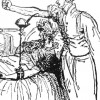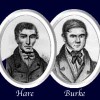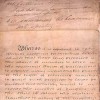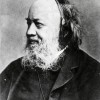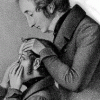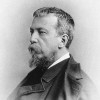Medicine timeline
Created by Dino Franco Felluga on Sun, 08/05/2018 - 15:29
Part of Group:
This timeline is about medical events that one can find in BRANCH.
Timeline
Chronological table
| Date | Event | Created by | Associated Places | |
|---|---|---|---|---|
| 26 Sep 1818 |
First medical blood transfusion between humans
ArticlesMatthew Rowlinson, “On the First Medical Blood Transfusion Between Human Subjects, 1818″ |
Dave Rettenmaier | ||
| Jan 1829 |
Trial of William Burke
Articles |
Dave Rettenmaier | ||
| Sep 1831 to Dec 1832 |
Cholera EpidemicThe first major cholera pandemic to cross the Channel began in Sunderland in September 1831, spread throughout the country, and was not determined to be over until more than a year later, in December of 1832. Articles |
Dave Rettenmaier | ||
| Jun 1832 |
Reform Act
ArticlesCarolyn Vellenga Berman, “On the Reform Act of 1832″ Related Articles |
Dave Rettenmaier | ||
| Jul 1832 |
Anatomy Act
Related Articles |
Dave Rettenmaier | ||
| 22 Jun 1833 |
The Hand
Articles |
Dave Rettenmaier | ||
| Jul 1842 |
Sanitary Condition of the Labouring Population
Related ArticlesPamela Gilbert, "On Cholera in Nineteenth-Century England" Barbara Leckie, “‘The Bitter Cry of Outcast London’ (1883): Print Exposé and Print Reprise” |
Dave Rettenmaier | ||
| 24 Aug 1846 |
Patrick Brontë’s Cataract Surgery
ArticlesMary Wilson Carpenter, “A Cultural History of Ophthalmology in Nineteenth-Century Britain” |
Dave Rettenmaier | ||
| 31 Aug 1848 |
Public Health Act
ArticlesPamela Gilbert, "On Cholera in Nineteenth-Century England" Barbara Leckie, “‘The Bitter Cry of Outcast London’ (1883): Print Exposé and Print Reprise” |
Dave Rettenmaier | ||
| Oct 1848 to Dec 1849 |
Cholera EpidemicThe second major cholera epidemic in the UK began in Scotland in October 1848 and is generally agreed to have largely subsided in the UK by the end of 1849. Articles |
Dave Rettenmaier | ||
| Aug 1853 to Nov 1854 |
Cholera EpidemicThe third major cholera epidemic in the UK began in August 1853 and extended through November 1854. It is during this epidemic that John Snow deduced the mode of transmission, by water contaminated with feces. Articles |
Dave Rettenmaier | ||
| Nov 1865 to Nov 1866 |
Cholera EpidemicThe last cholera epidemic is conventionally termed “of 1866” as that was the period of the highest mortality. The epidemic arrived in Britain in September 1865 and ended in November 1866. Articles |
Dave Rettenmaier | ||
| Jan 1877 |
Fat and Blood and How to Make Them
Articles |
Dave Rettenmaier | ||
| Jan 1892 |
"The Yellow Wallpaper"
Articles |
Dave Rettenmaier | ||
| Jan 1905 |
A Dark Lantern
Articles |
Dave Rettenmaier |

